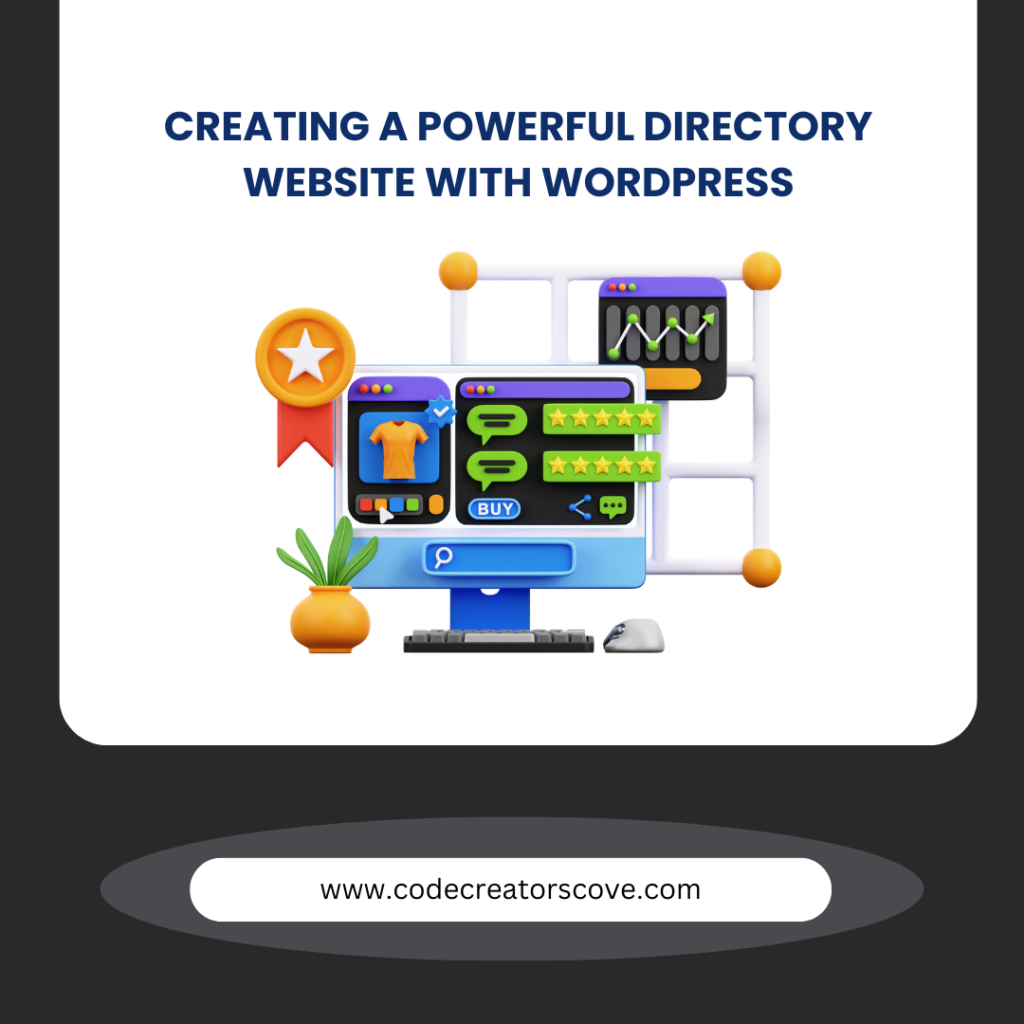In today’s digital age, directory websites have become essential tools for connecting users with businesses, services, or resources. Whether you aim to create a local business directory, a job listing site, or a niche-specific directory, WordPress offers robust capabilities to bring your vision to life. This guide will walk you through everything you need to know about creating a directory website using WordPress.
Introduction to Directory Websites
Directory websites serve as comprehensive databases that organize and present information in a user-friendly manner. A directory website functions as an organized listing platform where users can search for specific businesses, services, or resources. These websites can be broad, covering various categories, or niche-focused, targeting a particular industry or interest. They provide an efficient way for users to find what they are looking for while helping businesses reach a targeted audience.
Why Choose WordPress for Your Directory Website?
WordPress stands out as a leading platform for creating directory websites due to its versatility and extensive features. There are several compelling reasons to choose WordPress for your directory website:
1. User-Friendly Interface: WordPress is renowned for its ease of use, even for beginners. Its intuitive dashboard allows for effortless website management, making it accessible to users with little technical knowledge.
2. Extensive Plugin Ecosystem: WordPress offers a plethora of plugins designed specifically for directory websites, making it easy to add functionalities without coding. These plugins can enhance the site’s features, from advanced search filters to user review systems.
3. Customization Options: With thousands of themes and customization options, you can design a unique and professional-looking directory website. Whether you need a simple layout or a complex design, WordPress provides the tools to meet your requirements.
4. SEO-Friendly: WordPress is optimized for search engines, which helps your directory site rank higher in search results. Built-in SEO features and additional plugins ensure your content is easily discoverable by search engines.
Step-by-Step Guide to Building a Directory Website with WordPress
Building a directory website with WordPress involves several key steps, each critical to creating a functional and appealing site. Follow this detailed guide to set up your directory website:
1. Choosing a Domain and Hosting
The first step is selecting a memorable domain name that reflects your directory’s purpose. Your domain name should be short, relevant, and easy to remember. Then, choose a reliable hosting provider to ensure your website runs smoothly. Many hosting providers offer one-click WordPress installation, simplifying the setup process. Look for hosting plans that offer good performance, security features, and customer support.
2. Installing WordPress
After securing your domain and hosting, install WordPress. The installation process is straightforward, especially with hosting providers that offer automated setups. Most hosting providers offer an easy installation process. Once installed, you’ll access the WordPress dashboard, where you’ll manage your website. This dashboard is where you’ll control all aspects of your site, from design to content management.
3. Selecting a Directory Theme
Choose a WordPress theme tailored for directory websites. A good theme will offer the necessary design and functionality out of the box. Themes such as ListingPro, Listify, and DirectoryEngine offer built-in directory functionalities and design elements. Install and activate your chosen theme via the WordPress dashboard. Ensure the theme you choose is responsive, fast, and customizable to fit your brand’s identity.
4. Installing Essential Plugins
Plugins extend the functionality of your directory site, providing features not included in the basic WordPress setup. Some essential plugins include:
- GeoDirectory: Adds location-based directory functionalities. This plugin helps users find listings near them or in specific locations.
- WP Job Manager: Ideal for job listing directories. It provides features to manage job postings, applications, and job seekers.
- Business Directory Plugin: Offers comprehensive features for creating business directories. It includes tools for managing listings, user reviews, and more.
- Yoast SEO: Enhances your site’s SEO. This plugin helps you optimize your content for search engines, improving visibility and traffic.
Install these plugins from the WordPress plugin repository and activate them. Configure each plugin according to your site’s needs to ensure they work seamlessly together.
5. Configuring Your Directory
Customize your directory settings based on your needs to create a user-friendly and efficient site. Most directory plugins and themes offer extensive customization options, including listing categories, search filters, and submission forms.
- Create Categories: Organize listings into relevant categories. Categories help users navigate your site and find the listings they are interested in.
- Set Up Submission Forms: Allow users to submit their listings through user-friendly forms. These forms should be easy to fill out and collect all necessary information.
- Add Search and Filter Options: Enable users to easily find listings using search bars and filters. Effective search and filter options enhance user experience by making navigation simple and efficient.
6. Adding Listings
Populate your directory by adding initial listings. The quality and comprehensiveness of your initial listings set the standard for user submissions. You can manually add listings or allow users to submit their own. Ensure each listing includes comprehensive information such as business name, contact details, location, and a description. High-quality images and detailed descriptions will make your directory more appealing and useful.
7. Monetizing Your Directory Website
There are several ways to monetize your directory site, turning your efforts into a profitable venture:
- Paid Listings: Charge businesses a fee to be listed on your directory. This model works well if your directory has significant traffic and visibility.
- Featured Listings: Offer premium placement for a fee. Featured listings stand out and attract more attention, providing additional value to businesses.
- Advertisements: Display ads from relevant businesses. Advertisements can be a steady source of income if placed strategically without disrupting user experience.
Use plugins like WP Simple Pay or WooCommerce to handle payments and manage subscriptions. These tools simplify the payment process for both you and your users.
8. Optimizing for SEO
Optimize your directory site to rank higher in search results. SEO optimization ensures that your site reaches a broader audience. Use SEO plugins like Yoast SEO to:
- Optimize meta titles and descriptions. Meta titles and descriptions are critical for search engine visibility and click-through rates.
- Generate XML sitemaps. Sitemaps help search engines index your site more effectively.
- Improve readability and keyword usage. Well-written content with appropriate keyword usage improves your site’s search engine ranking.
9. Maintaining and Promoting Your Directory
Regularly update your directory with new listings and keep existing listings accurate. Maintenance ensures your directory remains relevant and useful. Promote your directory through social media, email marketing, and content marketing to attract more users and listings. Active promotion increases visibility and user engagement, driving more traffic and listings to your site.
Conclusion
Creating a directory website with WordPress is an efficient and cost-effective way to connect users with businesses or services. By following this comprehensive guide, you’ll set up a professional and functional directory site that meets the needs of your audience. With the right tools and strategies, your WordPress directory website can become a valuable resource and a successful online venture. Whether you are just starting or looking to enhance an existing site, WordPress provides the flexibility and functionality needed to build a powerful directory website.


